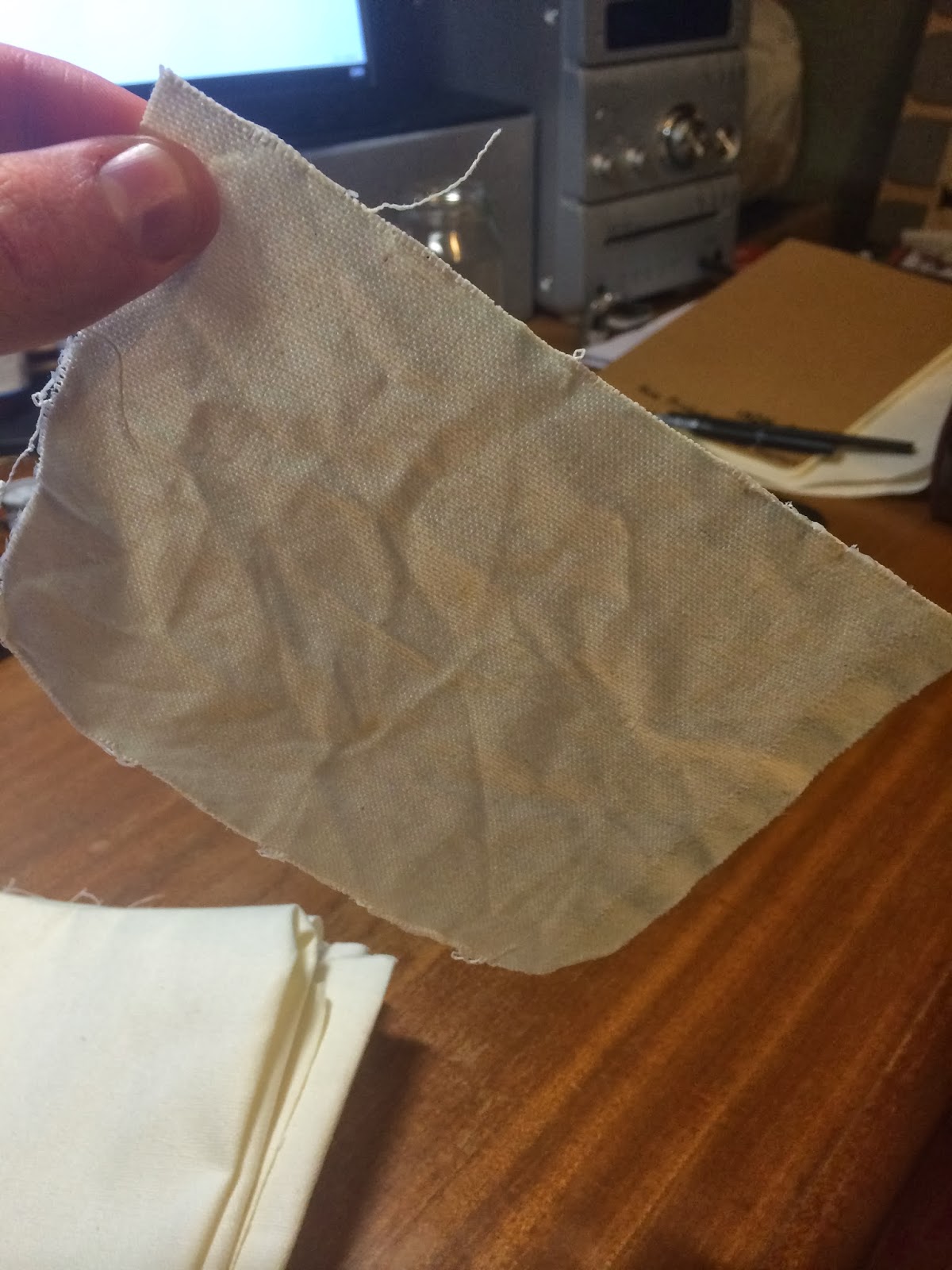I started out my experiments with a thick calico fabric, assuming that the thicker the fabric, the more PVA it would soak up and retain upon drying. I got this fantastic stuff from Made On Marion, a great little craft store near the university. I got heaps of it, so I'll definitely have some fun making stuff when I've got more time.
This is the difference between the look of the PVA-impregnated fabric and the normal stuff. To get the fabric to the consistency I wanted, I had to impregnate it with the PVA multiple times. This allowed more and more of the PVA to be deposited into the fabric. There tends to have been more collection of the PVA near the edges, rather than near the middle.
The resulting look of the fabric due to my scrunching it up and soaking up the PVA water is really cool. It really wants to retain the creases, and so far there hasn't been a way of eliminating the creases. However, I think this is where it's beauty lies, as the fabric just ends up looking really cool and dynamic. The way the light reflects off the different angles of the fabric is an effect that I think I can do something with.
It was then that I noticed that when I held the fabric up to the light, the warping and stressing of the fabric resulted in a really unique look. The fabric essentially formed different thickness depending on the angle of the warp in the fabric, which in turn allowed more or less light through compared to the average. This gives the fabric a really aged and weathered look, which I think has definite potential.
Another interesting element was when the fabric was folded, as this gave the light an even thicker surface for it to work it's way through. This then sparked the idea of creating a light that might be based on these aspects that the PVA was generating in the fabric. One problem with this particular fabric that I realised however was that the fabric was so thick and heavy that it was collapsing under its own weight, rather than being held up by the PVA. So what I need to alter is to reduce the thickness and weight of the fabric, to allow the PVA to work it's magic.
Rather than being a purposeful light, I had in mind something far more subtle, with the intention of creating something that was quite ambient. Perhaps a night light? Or a small bedside lamp for providing soft, interesting illumination. One of the beautiful elements of PVA is that it always remains water soluble, and this could provide an element of customisation with this form of lamp. If I were to create the mapshade out of this material, that could allow the user to then spray the shade with PVA water and then re-sculpt the form of the lamp to their heart's content.






No comments:
Post a Comment